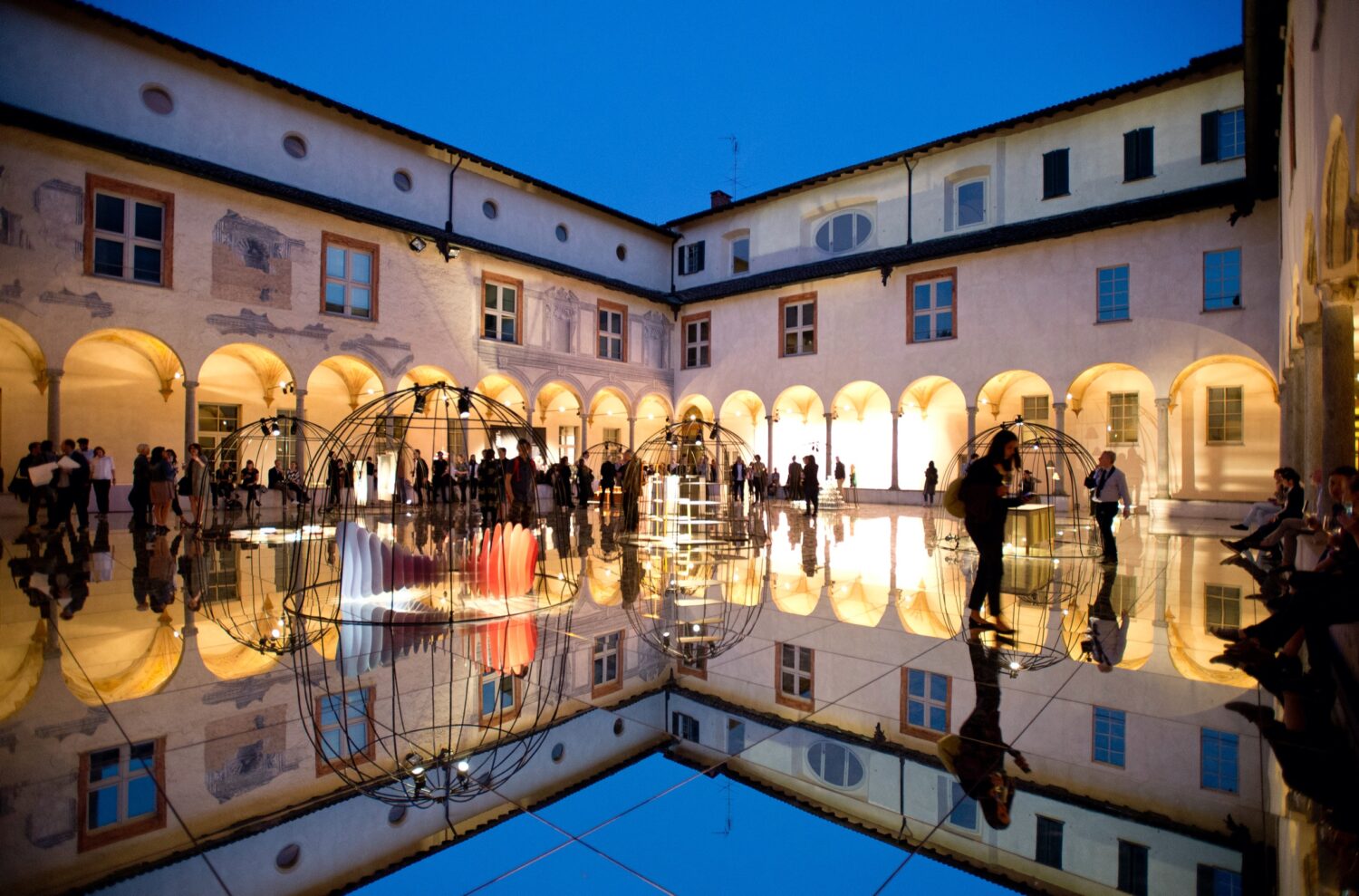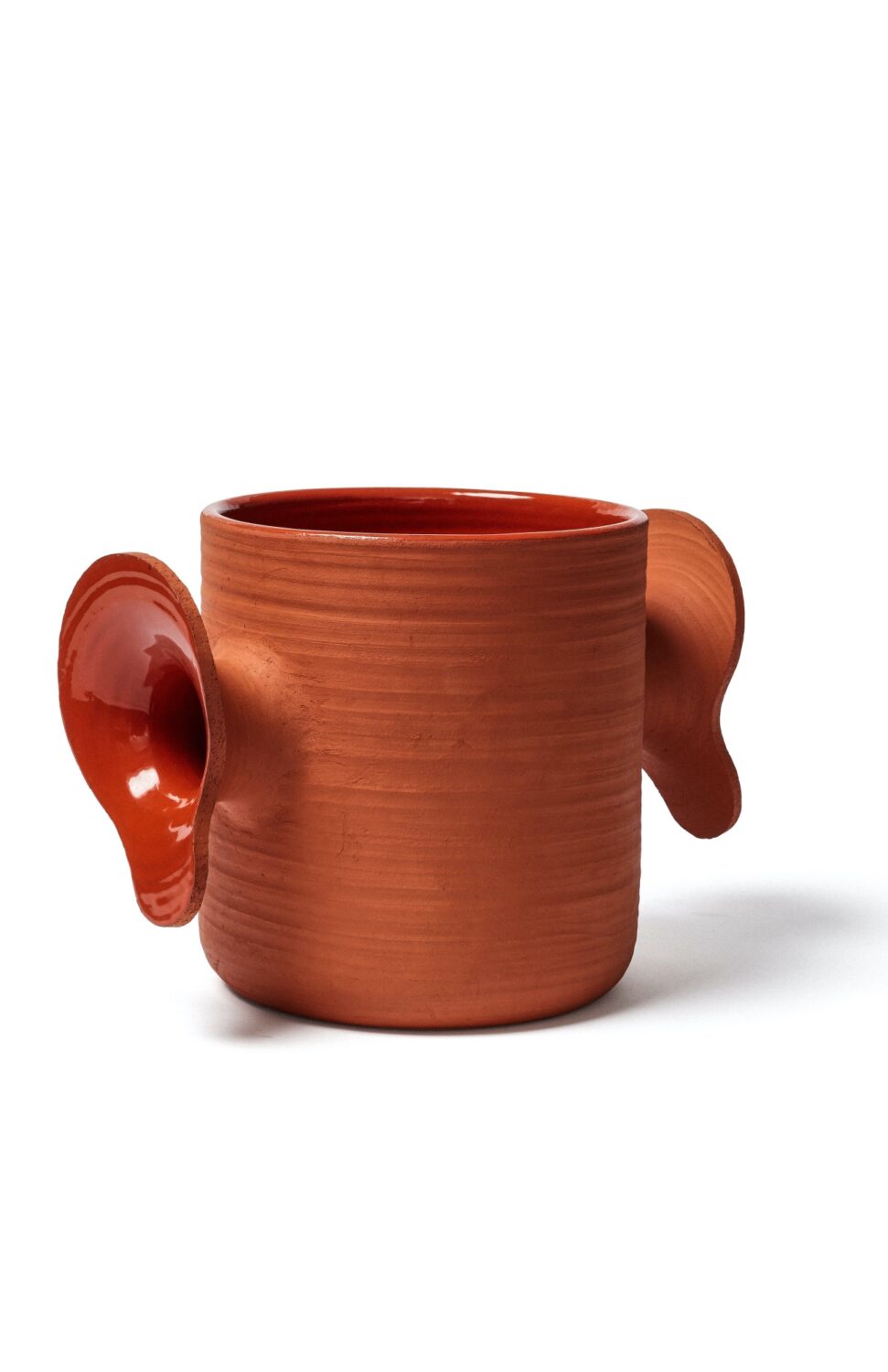Anyone who has visited the Milan Design Week in recent years will be familiar with the size of the crowds thronging through the city’s streets and happily queuing up to experience the latest design creations: legendary design brands in historical palaces, innovative installations, star designers and decadent furniture. Milan is a hot destination and has been for years. The city’s selection of gallery shows and majestic manifestations in unique locations that only exist for a brief period once a year has continually surpassed itself year after year.
In ‘the old days’, the furniture fair outside the city was the main stage for new developments, while the city itself was mainly a place for showroom openings and a bite to eat. That changed when the Ventura Lambrate area just outside the city centre became the popular place to be, as design schools and upcoming brands, galleries and other talents from around the world began to exhibit there. This was the time when Mindcraft began to make a real impact. The two previous years, Mindcraft had been presented in Zona Tortona, but the first-movers had moved to Lambrate, and Mindcraft joined them. That was a good move.

Here, in a narrow room with a basement, on a street that most people passed through, competent Danish designers and craft makers were showcased to a larger audience. A hand-picked group, of course – just 10–15 performers per exhibition. Now, the Mindcraft concept began to gain real momentum. Kristian Kastoft and Anders Kongskov, who founded Copenhagen Design Agency, were involved in Mindcraft at the time, along with others, as employees of the government agency Danish Crafts under the Ministry of Culture. The architect and curator Karen Kjærgaard developed the concept in collaboration with Danish Crafts, which owned and ran Mindcraft from 2008 to 2013. Kjærgaard was the curator for the first three years, followed by the designers Cecilie Manz, Salto & Sigsgaard, Nina Tolstrup, GamFratesi, Henrik Vibskov and Ditte Hammerstrøm – all appointed as external curators by the board of Danish Crafts and, later, the Danish Arts Foundation.
In 2015, with GamFratesi as the curators and exhibition architects, Mindcraft moved into the city centre to exhibit at San Simpliciano, a charming cloister in the popular Brera quarter. This exhibition must be characterized as a breakthrough for Mindcraft, for a number of reasons, including the calm, attractive location in the middle of the hustle and bustle of the design week and Gamfratesi’s magical exhibition design. The cloister was lined in mirrors reflecting both the exhibits and the historical setting, which varied with the changing light over the course of the day and night. With this unique – and uniquely successful – presentation, Mindcraft joined the league of must-visits at the Milan Design Week.
The Mindcraft Project
The Mindcraft Project builds on the Danish craft and design tradition. The combination of ‘Mind’ and ‘Craft’ points to the core of the project, which combines experimental, innovative and conceptual design approaches with the unique technical skills and knowledge of materials that characterizes the craft field.
Since 2008, The Mindcraft Project has presented high-profile, internationally acclaimed exhibitions during the Milan Design Week.
The Mindcraft Project is an award-winning platform for explorative and experimental design from Denmark that aims to give the participating makers and designers an international reach and put them into contact with new markets and potential projects. The project website continuously publishes articles, backed up by digital marketing on social media.
It had taken seven years to get there. To date, since 2008, 100 Danish makers and designers have participated in Mindcraft. Some more than once, but continuity builds consistence, just as well-established names, some even with international clout, help attract attention, which lifts up the rest and the Danish field overall.

The Mindcraft Project
Three years ago, Copenhagen Design Agency took over responsibility for developing the format further and renamed the initiative The Mindcraft Project. Renewal is imperative. And that makes sense. Both the renewal and the fact that Kastoft and Kongskov are now the ones who continue the proud tradition. They have been involved in the project throughout, and they have the network to maintain the momentum. Asked about the national and international impact of Mindcraft, Kastoft replies:

Mindcraft has also boosted the position of Danish crafts and design around the world by virtue of its persistent focus on international exhibitions and communication. This long-term strategic approach has raised awareness of Mindcraft and thus of Danish crafts and design abroad. In turn, this international profile has also raised awareness in Denmark, which is a strong motivator for optimal performances. In this way, the initiative has also supported the development of the Danish scene.’
Among the renewals that were implemented in 2020 is a broader curatorial perspective. Today, the organization behind The Mindcraft Project includes two different boards, each comprised of three professionals. This new structure, with a General Advisory Board and a Curator Advisory Board with varying members, aims to make the discussions about craft and design issues and diversity in expression, quality and originality as nuanced, in-depth and forward-looking as possible.

Europe in lockdown
In spring 2020, just before the first edition of the new Mindcraft, The Mindcraft Project, was to have its debut in Milan, Covid-19 sent Europe into lockdown. That put the project in a tough spot, but fortunately, that year’s curators and exhibition architects were the digitally minded, interdisciplinary design duo Wang & Söderström, who were able to transform The Mindcraft Project into a digital experience. The world explored the altered format, as change and agility became the new constants.
How did the audience respond to the digital Mindcraft in 2020, a format you are repeating this year?
‘The new format was well-received. As physical exhibitions were no longer an option, the main thing was to ensure there even was an exhibition. The Mindcraft Project was never intended exclusively as an exhibition. From the outset, it was conceived as a platform aiming to give the participating designers an international presence and put them into contact with new markets and potential projects. The digital format lets us extend our reach to new target groups, giving more people, both in Denmark and abroad, knowledge of Danish craft and an appreciation of its unique qualities. The digital exhibition format also offers better opportunities for looking behind the exhibits and makers and communicating the creative process than a typical physical format.
Mindcraft has always challenged the exhibition format. Both in terms of where the exhibitions were presented and how. In that way, Mindcraft has always challenged the status quo. For example, showcasing Danish crafts at the Milan Design Week in 2008 was a brand-new, groundbreaking initiative.

Future exhibitions
Now that a European reopening is in sight, the question is whether the new digital formats are here to stay, or whether we are simply going to gorge ourselves on analogue, physical exhibitions out of sheer digital fatigue. Because we need to see, smell, touch. Experience tactile qualities. Activate our spatial perception. And interact with others in our encounter with art.
Will we be travelling and visiting exhibitions physically, as we did before the pandemic, or has the way we travel and experience culture changed for good?
‘We believe we’re going to see a mix that includes the best of both worlds – physical and digital,’ say Kastoft and Kongskov.

‘We may well see new ways of presenting exhibitions. The pandemic has forced us all to rethink. And maybe it’s a good thing that we’re constantly compelled to renew ourselves – also in terms of how we communicate and exhibit. But there is a significant appetite to meet face to face again, to network and to take in physical exhibitions and events, so they will probably reappear in modified formats as soon as the world opens again. In any case, things are unlikely to go back to exactly what they were.
In terms of the Milan Design Week, which is held in connection with the big international furniture fair Salone del Mobile, the furniture industry had to readjust for a while during the pandemic. They found new efficient and more sustainable ways of presenting themselves. Whether they will be going back to the traditional physical presentations, which involved very costly exhibitions and big productions, that’s a big question. Time will tell. Hopefully, this experience will provide some food for thought and inspire cultural and commercial manufacturers to stage more sustainable presentations in the future.’
Faktaboks
Copenhagen Design Agency, which consists of Kristian Kastoft and Anders Kongskov, has been in charge of The Mindcraft Project since 2019. In connection with the hand-over from the Danish Arts Foundation, the funding model also changed, and The Mindcraft Project now relies on support from foundations and private sponsors and partners.
General Advisory Board
- Anne-Louise Sommer – director of Designmuseum Danmark
- Thomas Graversen – owner of Fredericia Furniture
- Njusja de Gier -senior vice president of Kvadrat
Curator Advisory Board 2021
- Nicolai de Gier – professor at the Royal Danish Academy and design director of TAKT
- Mette Barfod – editor-in-chief of Ark Journal
- Jamiee Williams –architect

